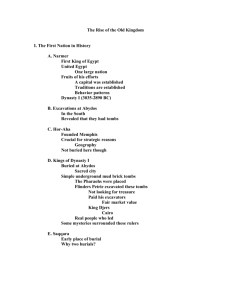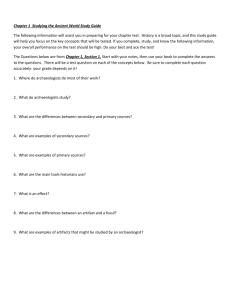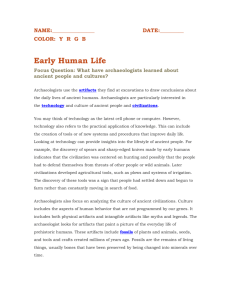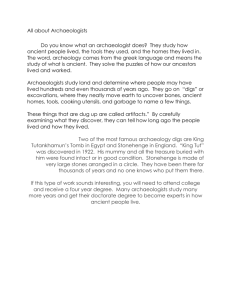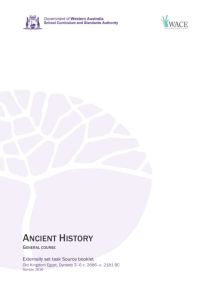ACE Example Reading
advertisement
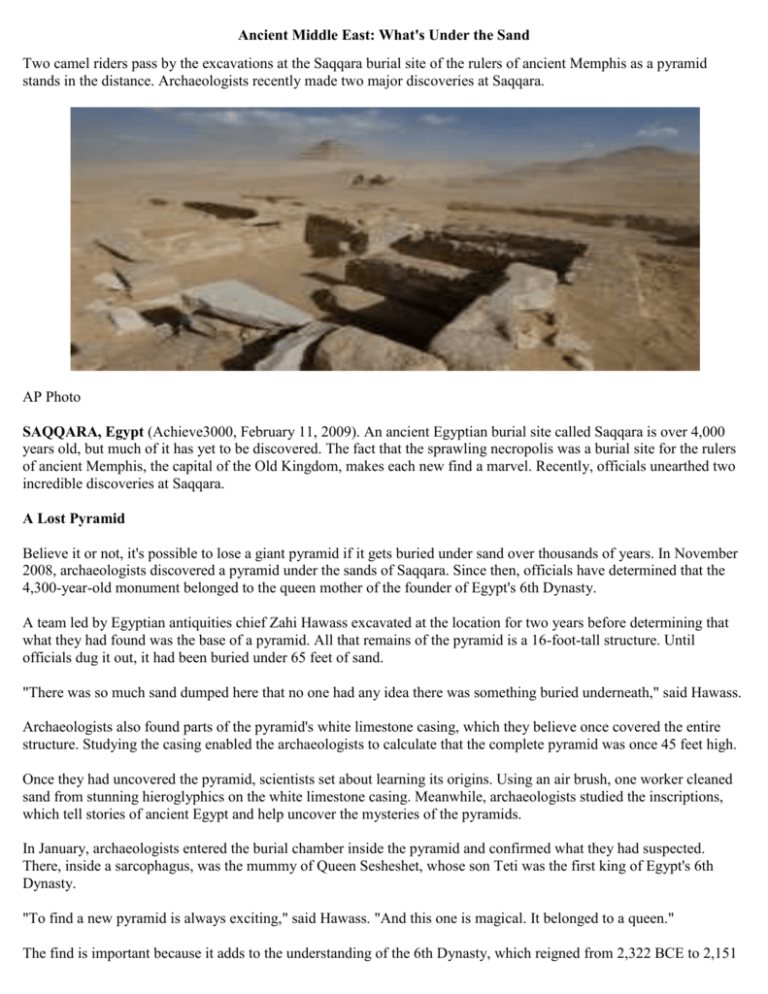
Ancient Middle East: What's Under the Sand Two camel riders pass by the excavations at the Saqqara burial site of the rulers of ancient Memphis as a pyramid stands in the distance. Archaeologists recently made two major discoveries at Saqqara. AP Photo SAQQARA, Egypt (Achieve3000, February 11, 2009). An ancient Egyptian burial site called Saqqara is over 4,000 years old, but much of it has yet to be discovered. The fact that the sprawling necropolis was a burial site for the rulers of ancient Memphis, the capital of the Old Kingdom, makes each new find a marvel. Recently, officials unearthed two incredible discoveries at Saqqara. A Lost Pyramid Believe it or not, it's possible to lose a giant pyramid if it gets buried under sand over thousands of years. In November 2008, archaeologists discovered a pyramid under the sands of Saqqara. Since then, officials have determined that the 4,300-year-old monument belonged to the queen mother of the founder of Egypt's 6th Dynasty. A team led by Egyptian antiquities chief Zahi Hawass excavated at the location for two years before determining that what they had found was the base of a pyramid. All that remains of the pyramid is a 16-foot-tall structure. Until officials dug it out, it had been buried under 65 feet of sand. "There was so much sand dumped here that no one had any idea there was something buried underneath," said Hawass. Archaeologists also found parts of the pyramid's white limestone casing, which they believe once covered the entire structure. Studying the casing enabled the archaeologists to calculate that the complete pyramid was once 45 feet high. Once they had uncovered the pyramid, scientists set about learning its origins. Using an air brush, one worker cleaned sand from stunning hieroglyphics on the white limestone casing. Meanwhile, archaeologists studied the inscriptions, which tell stories of ancient Egypt and help uncover the mysteries of the pyramids. In January, archaeologists entered the burial chamber inside the pyramid and confirmed what they had suspected. There, inside a sarcophagus, was the mummy of Queen Sesheshet, whose son Teti was the first king of Egypt's 6th Dynasty. "To find a new pyramid is always exciting," said Hawass. "And this one is magical. It belonged to a queen." The find is important because it adds to the understanding of the 6th Dynasty, which reigned from 2,322 BCE to 2,151 Ancient Middle East: What's Under the Sand BCE. It was the last dynasty of the Old Kingdom, a time when Egypt revolutionized agriculture and became very wealthy. During the 6th Dynasty, however, this prosperity came to an end, and the Old Kingdom eventually fell. What Tombs Tell Us Saqqara is the source of endless wonder for archaeologists. In December 2008, they uncovered a pair of 4,300-year-old tombs. The discovery indicates that the necropolis of Saqqara is even larger than previously thought. "… The two tombs are the beginning of a big, large cemetery," said Zahi Hawass. The tombs were built for high officials. One official was responsible for the quarries used to build the nearby pyramids, and the other was responsible for securing entertainment for the royal family. Archaeologists put together this information by studying the burial chambers. One of the tombs is about a yard wide and 2.75 yards long and has a description above the entrance about the man, Yaamat, for whom it was built. The second tomb is twice the size and includes inscriptions and an image of a seated woman. Since the burial chambers were not built for kings, archaeologists are less interested in the tombs themselves than they are in what the tombs tell them. "This [discovery] means the royal cemetery is bigger than we thought," said Saleh Suleiman, the archaeologist responsible for the excavation of the two tombs. Aidan Dodson, an archaeologist who was not involved in the dig, said the discovery opens new possibilities. "It shows that the blank areas of the maps of Saqqara aren't really empty at all. It's just that archaeologists haven't [gotten around] to digging them," Dodson said. Excavations have been going on at Saqqara for about 150 years. This work has uncovered the vast necropolis of pyramids, tombs, and funerary complexes, mostly from the Old Kingdom. Yet past digs have focused on just one area. The area where the two tombs were found has been largely untouched. According to Hawass, only 30 percent of Egypt's monuments have been uncovered. The rest are still under the sand. The Associated Press contributed to this story. Ancient Middle East: What's Under the Sand Dig Deeper The history of the United States traces back just under 250 years, or about 500 years if you count the time since Europeans first discovered America. That seems like a long time—until you compare it to the history of ancient Egypt. People lived in the Nile Valley for many years before the First Dynasty began. Egypt's line of dynasties lasted over 2,500 years, and even after the line ended, it would still be about 700 years before the year 1 CE. Use this timeline to place the events in "What's Under the Sand" into the span of ancient Egyptian history. dynasty (noun) line of rulers who come from the same family funerary complex (noun) an area used for burial hieroglyphics (noun) a system of writing, in which pictorial symbols are used to represent meaning necropolis (noun) an ancient cemetery sarcophagus (noun) an ancient marble or stone coffin, often decorated with artwork and inscriptions
